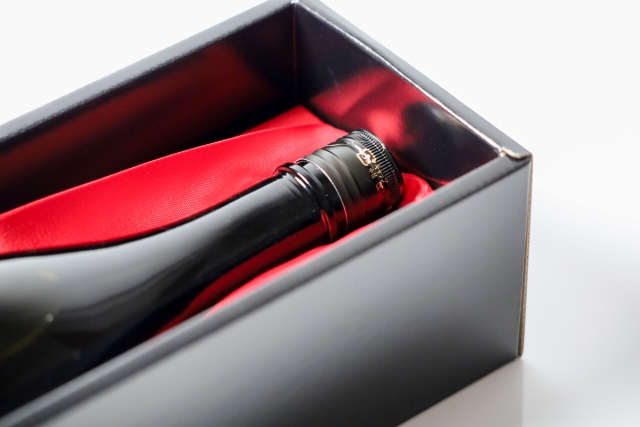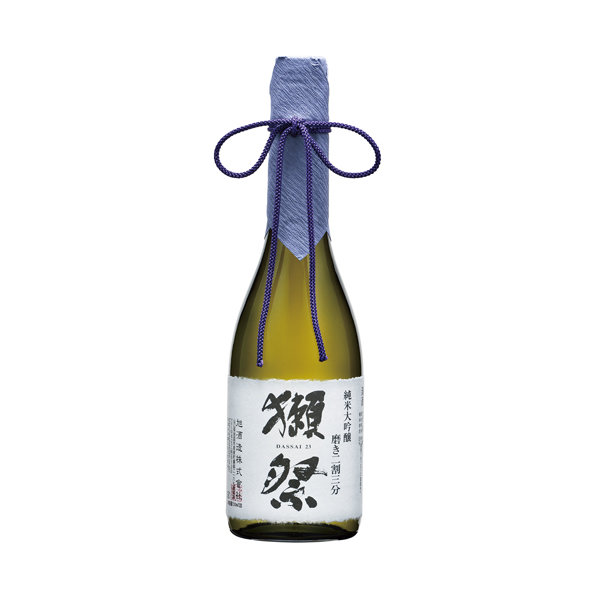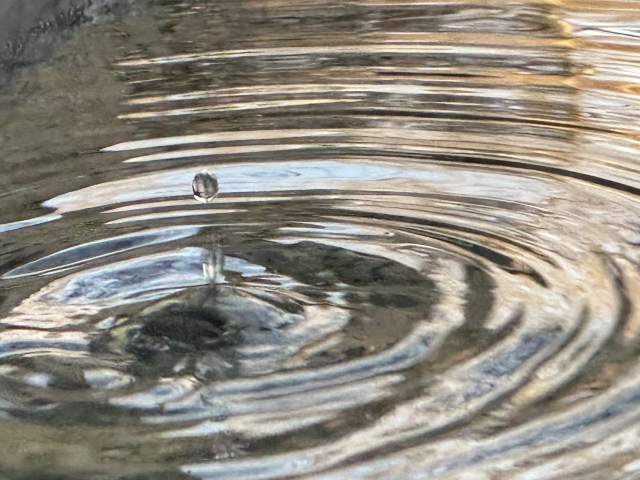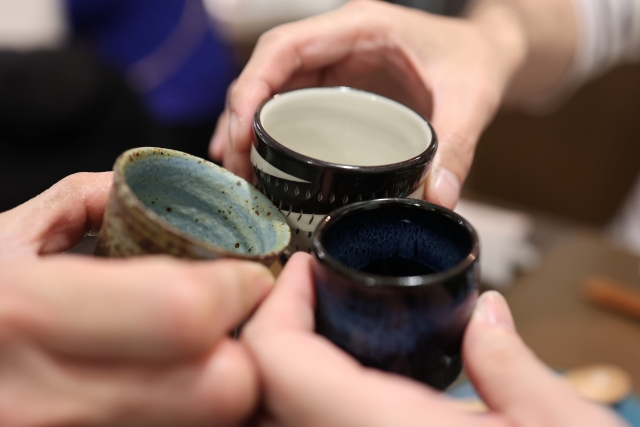
Embark on a journey into the delicate and aromatic world of Ginjo sake, a premium category of Japanese rice wine that has been captivating connoisseurs and newcomers alike. This comprehensive guide is designed to demystify Ginjo sake for beginners, offering insights into its production, characteristics, and how to enjoy this exquisite beverage. With a focus on brands available in the United States, let's dive into the fragrant world of Ginjo sake.
Introduction to Ginjo Sake
What Is Sake?
Sake, often referred to as nihonshu in Japan, is a fermented alcoholic beverage made primarily from rice. Unlike wine, where alcohol is produced by fermenting sugar that is naturally present in fruit, sake is produced by a brewing process more similar to that of beer, where the starch is converted into sugars before being fermented into alcohol.
Defining Ginjo Sake
Ginjo sake represents a premium class of sake characterized by its labor-intensive brewing process and the use of highly polished rice. To qualify as Ginjo, the rice must be polished to remove at least 40% of the outer layer, leaving 60% or less of the grain. This extensive polishing process results in a sake with a lighter, more fragrant, and complex flavor profile than its less polished counterparts.
The Art of Making Ginjo Sake

Key Ingredients: Rice, Water, Yeast, and Koji
The quality of Ginjo sake is heavily influenced by its four main ingredients: rice, water, yeast, and koji (a type of mold used in the fermentation process). The choice of rice variety, the purity of water, the strain of yeast, and the quality of koji all play crucial roles in defining the sake's final flavor and aroma.
The Special Brewing Process of Ginjo
Ginjo sake brewing is notable for its precision and care. The fermentation process occurs at lower temperatures and over a longer period than standard sake, allowing for the development of its distinctive delicate flavors and aromatic compounds.
The Importance of Rice Polishing
Rice polishing is a critical step in the production of Ginjo sake. The extent to which the rice is polished affects the sake's flavor, aroma, and overall quality. The more the rice is polished, the purer and more refined the flavor of the sake will be.
Characteristics of Ginjo Sake

Understanding the Flavor Profile
Ginjo sake is renowned for its complex and nuanced flavor profile. It often exhibits fruity and floral notes, with a clean and smooth finish. The specific flavor characteristics can vary widely depending on the brewing techniques and ingredients used.
Aroma: The Signature of Ginjo
The aroma of Ginjo sake is one of its most distinguishing features. These aromas can range from apple, pear, and melon to floral notes like cherry blossom and rose, making each sip a rich sensory experience.
The Texture and Taste
Ginjo sake is typically lighter and more balanced in terms of sweetness and acidity compared to other types of sake. Its texture can be described as silky or velvety, contributing to its overall elegance and sophistication.
How to Enjoy Ginjo Sake
Serving Temperature: Cold, Room Temperature, or Warm?
Ginjo sake is best enjoyed chilled to preserve its delicate aromas and flavors. However, some may also be served at room temperature or slightly warmed, depending on personal preference and the specific characteristics of the sake.
I like to drink it crisp and cold on a hot day. Especially the combination of ginjo-shu and edamame is so delicious that I can't stop drinking it.
The Best Glassware for Ginjo Sake
To fully appreciate the aroma and taste of Ginjo sake, it is recommended to use a small, tulip-shaped glass. This type of glassware concentrates the sake's aromatics, enhancing the tasting experience.
Pairing Ginjo Sake with Food
Ginjo sake pairs wonderfully with a wide range of foods. Its light and fragrant nature makes it an excellent companion to delicate dishes such as sushi and sashimi, as well as lightly seasoned vegetable and tofu dishes.
Ginjo Sake Varieties
| Type | Ingredients | Rice Polishing Ratio | Flavor and Aroma Characteristics |
| Daiginjo | Rice, rice koji, water, brewing alcohol | 50% or less | Delicate, with complex and refined flavors and aromas. Often fruity and floral. |
| Ginjo | Rice, rice koji, water, brewing alcohol | 60% or less | Light and fragrant, with noticeable fruity and floral notes. Less complex than Daiginjo but still very aromatic. |
| Junmai Daiginjo | Rice, rice koji, water | 50% or less | Similar to Daiginjo but may have a fuller body due to the absence of added alcohol. Rich, complex flavors with a pure rice profile. |
| Junmai Ginjo | Rice, rice koji, water | 60% or less | Offers a balance between richness and the delicate, aromatic profile of Ginjo. Fruity and floral, with a slightly more pronounced rice flavor. |
Junmai Ginjo vs. Ginjo
Junmai Ginjo is a subtype of Ginjo sake made without the addition of distilled alcohol. This results in a sake with a fuller body and a slightly more acidic profile than regular Ginjo, which may have a small amount of alcohol added to enhance aroma and flavor.
Daiginjo: The Pinnacle of Sake Brewing
Daiginjo is a super-premium category of Ginjo sake, requiring the rice to be polished to at least 50%, often much more. Daiginjo sake is known for its exquisite balance, profound aroma, and exceptional clarity of flavor.
Selecting Your Ginjo Sake

Reading the Label: A Beginner's Guide
When selecting a bottle of Ginjo sake, the label can provide valuable insights into its flavor profile, brewing method, and quality. Look for terms like "Ginjo" or "Daiginjo" to ensure you're getting premium sake. The label may also indicate whether it's a Junmai (pure rice sake) or if brewer's alcohol has been added. Additionally, the rice polishing ratio (seimaibuai) offers clues about the sake's refinement and flavor complexity.
Price Range and Quality Indicators
Ginjo sake generally comes at a higher price point due to the labor-intensive production process and the high degree of rice polishing. While price can often be an indicator of quality, there are many affordable Ginjo sakes that offer a delightful tasting experience. Don't hesitate to explore different brands and price ranges to find your personal favorites.
Storing Your Ginjo Sake
Proper Storage Conditions
To preserve the delicate flavors and aromas of Ginjo sake, it should be stored in a cool, dark place. If possible, keep the bottle in a refrigerator, especially after opening. Avoid exposure to direct sunlight and high temperatures, which can accelerate aging and affect the sake's quality.
Shelf Life: Opened and Unopened Bottles
Unopened bottles of Ginjo sake can be stored for about one to two years, depending on the storage conditions. Once opened, it's best to consume the sake within a few days to a week to enjoy its optimal flavor. Some sakes may last longer, but the aromatic qualities will diminish over time.
Ginjo Sake in the United States
Popular Brands and Where to Find Them
In the United States, a variety of Ginjo sake brands are readily available, catering to a wide range of tastes and preferences. Some popular brands include:
Kubota Manju: A well-balanced Junmai Daiginjo with a subtle sweetness and crisp finish.

Dassai 23: A renowned Junmai Daiginjo sake known for its smooth texture and elegant aroma.

Hakkaisan Snow Aged Junmai Daiginjo 3 Years: Offers a unique taste profile due to its aging process.

These and other fine Ginjo sakes can be found at specialized liquor stores, Japanese markets, and online retailers.
Online vs. Local: Buying Tips
While local stores may offer the advantage of personal recommendations and the chance to explore a curated selection, online shopping can provide access to a wider variety of brands and competitive pricing. When buying online, ensure the retailer has proper storage and shipping practices to maintain the sake's quality.
Cultural Significance of Ginjo Sake
Ginjo Sake in Japanese Culture
Ginjo sake holds a special place in Japanese culture, often reserved for special occasions and celebrations. Its production is considered an art form, reflecting the skill and dedication of the brewer. The enjoyment of Ginjo sake is also associated with the appreciation of seasonal changes and natural beauty, embodying the concept of "mono no aware."
The Global Rise of Ginjo Sake
The international popularity of Ginjo sake has grown significantly, with enthusiasts and connoisseurs around the world seeking out its unique qualities. This global appreciation has led to increased availability and interest in sake brewing outside Japan, contributing to the beverage's evolving landscape.
Beyond the Basics: Advanced Ginjo Sake Topics

The Role of Water in Sake Brewing
Water is a crucial component in sake brewing, affecting everything from the fermentation process to the final flavor profile. The mineral content and purity of the water used can significantly influence the taste and quality of the sake.
Seasonal Variations in Ginjo Sake
Some breweries produce seasonal Ginjo sakes that reflect the characteristics of the brewing season. These limited-edition sakes offer a unique tasting experience, showcasing the brewer's skill in capturing the essence of each season.
FAQs: Everything You Wanted to Know About Ginjo Sake
Answering Common Questions
- Q: Can Ginjo sake be aged?
- A: While most Ginjo sake is best enjoyed young to appreciate its fresh flavors, some can be aged under the right conditions, developing deeper, more complex profiles.
- Q: Is Ginjo sake gluten-free?
- A: Yes, sake is made from rice and is naturally gluten-free, making it a suitable option for those with gluten sensitivities.
Summary: The Enchanting World of Ginjo Sake

Why Ginjo Sake Is a Must-Try Experience
Ginjo sake offers a gateway to the nuanced and refined world of Japanese sake. With its delicate aromas, complex flavors, and the meticulous craftsmanship behind each bottle, Ginjo sake provides a tasting experience like no other. Whether you're a seasoned sake enthusiast or new to the world of Japanese rice wine, Ginjo sake is sure to captivate and delight.
Recap of Key Takeaways
- Ginjo sake is a premium category characterized by its fragrant aroma and refined flavors.
- The production of Ginjo sake involves careful selection of ingredients and a labor-intensive brewing process.
- Serving Ginjo sake chilled and in proper glassware enhances its enjoyment.
- The United States offers a wide selection of Ginjo sake, accessible both online and in local stores.
Embarking on the journey of exploring Ginjo sake is not only about tasting an alcoholic beverage but also about experiencing a rich cultural tradition that has been perfected over centuries. As you explore the diverse world of Ginjo sake, you'll discover new flavors, aromas, and stories that deepen your appreciation for this exquisite drink.
